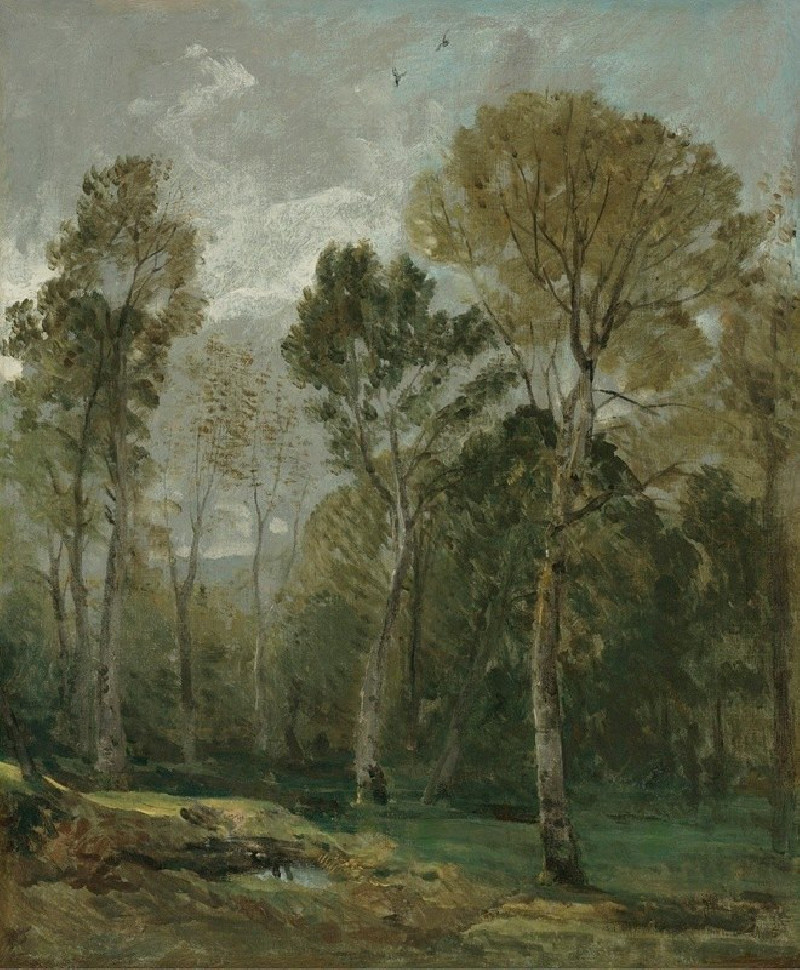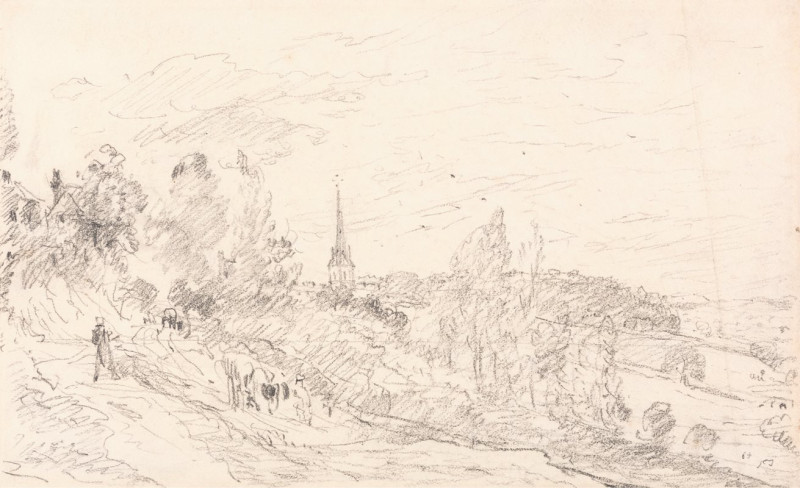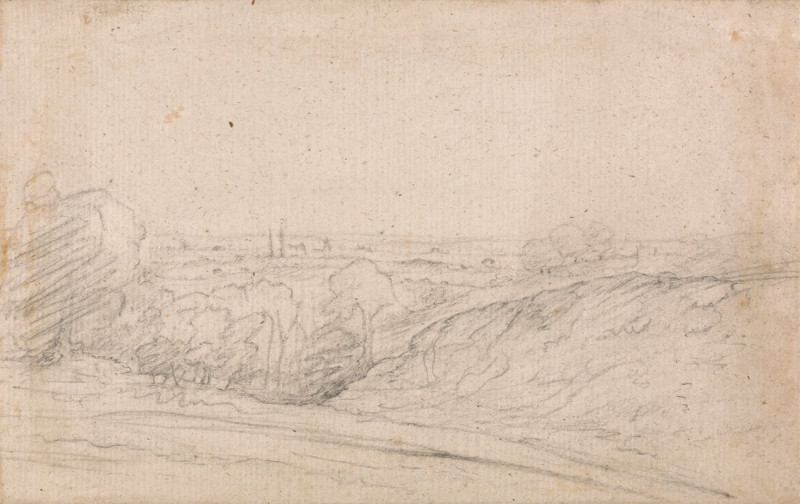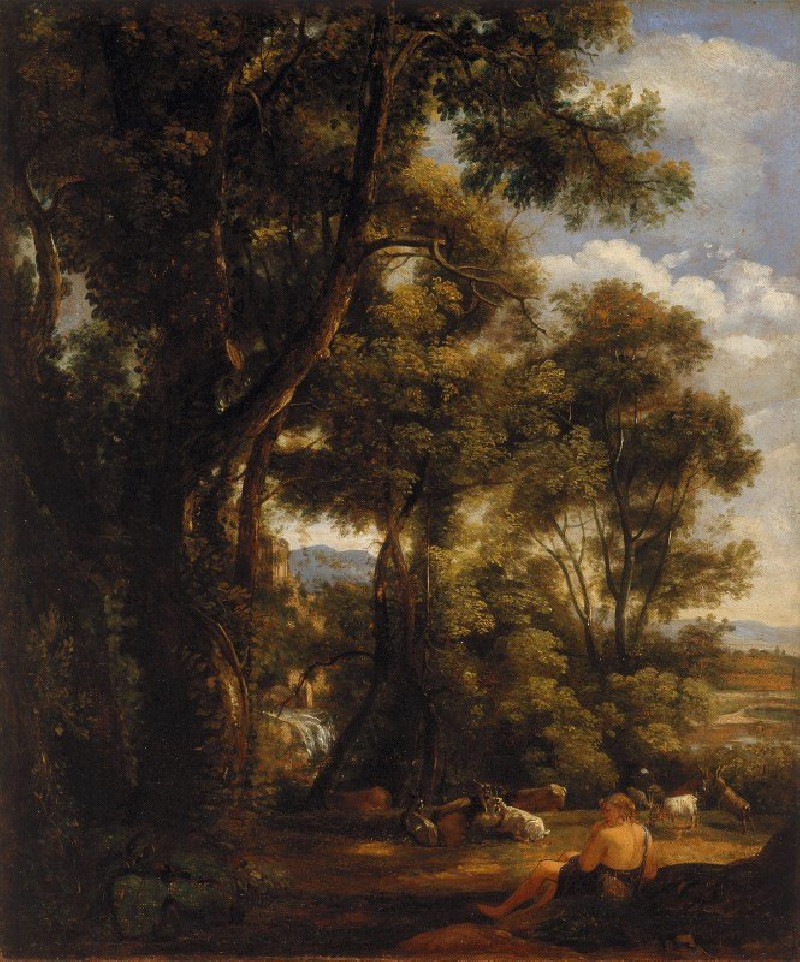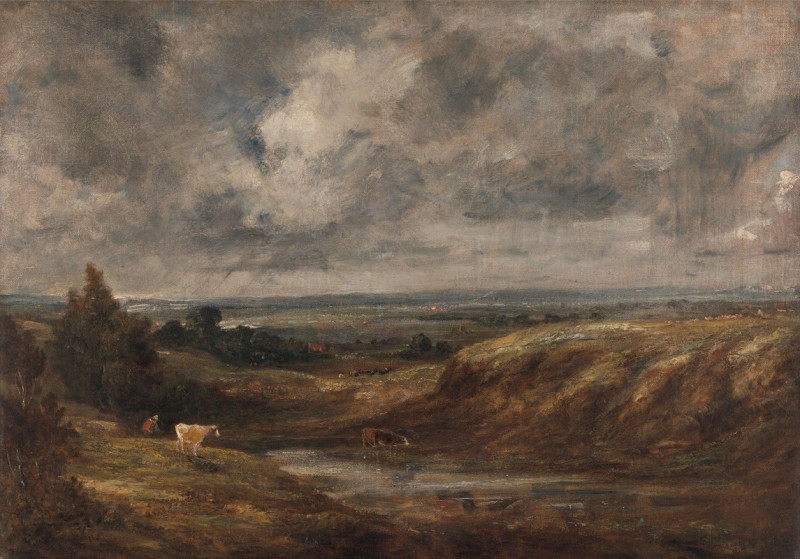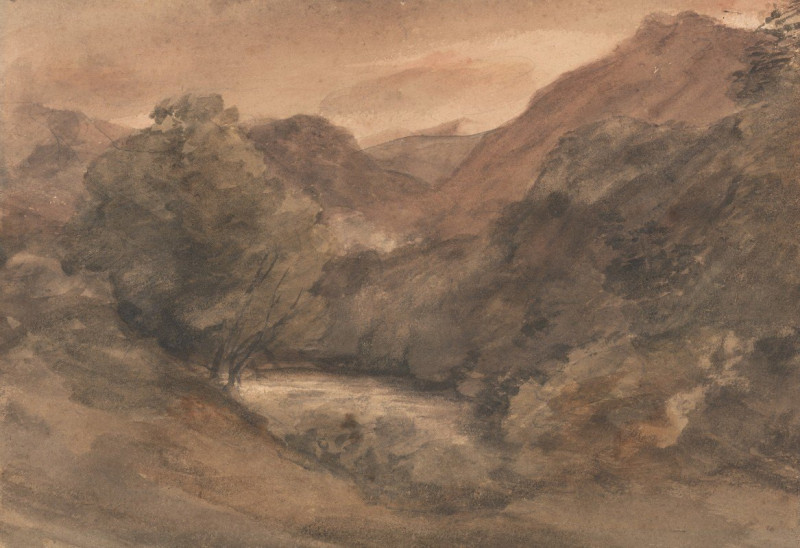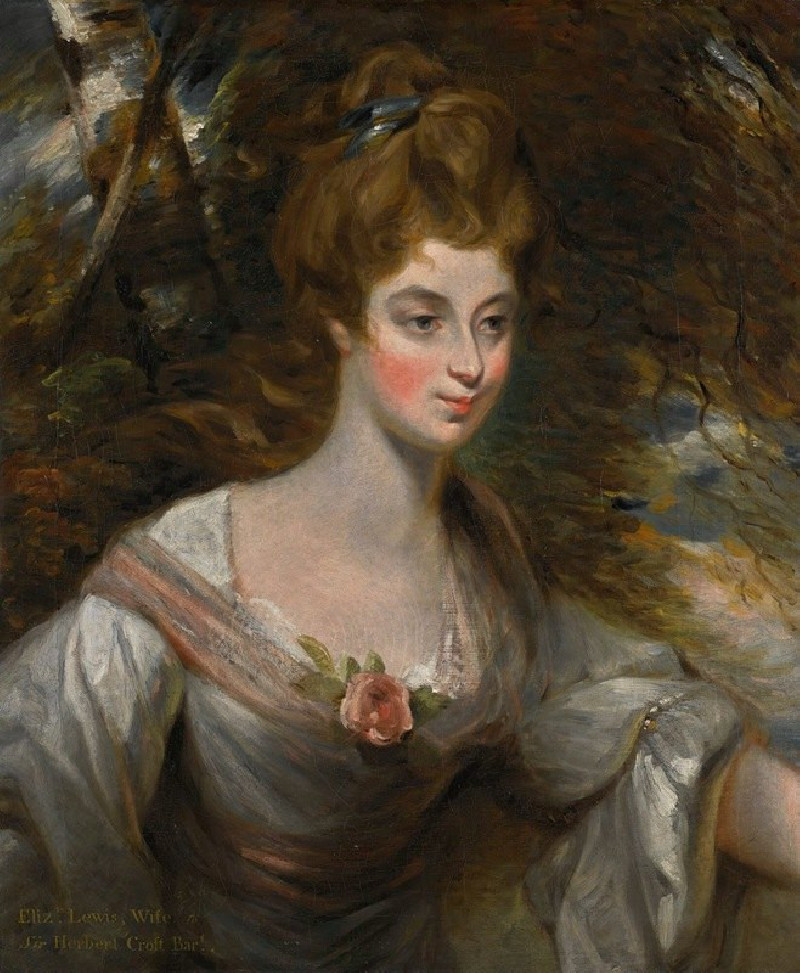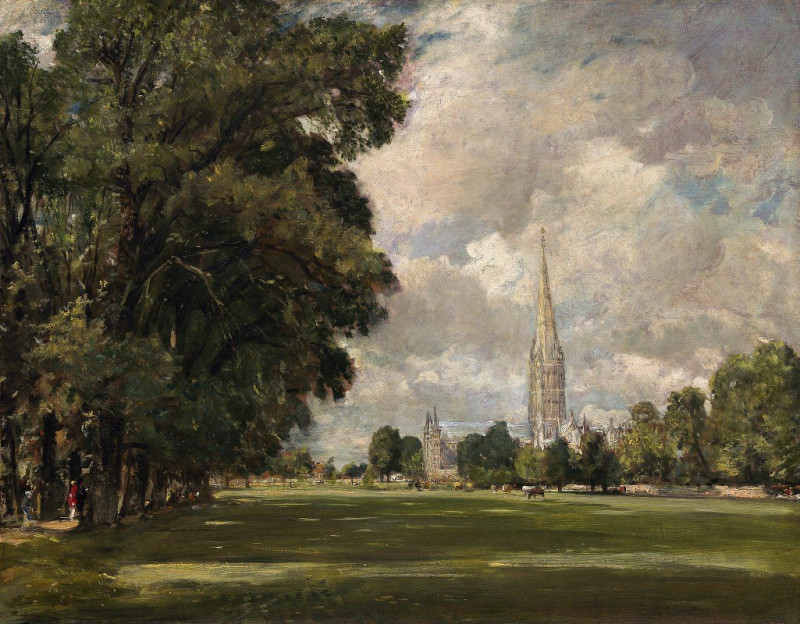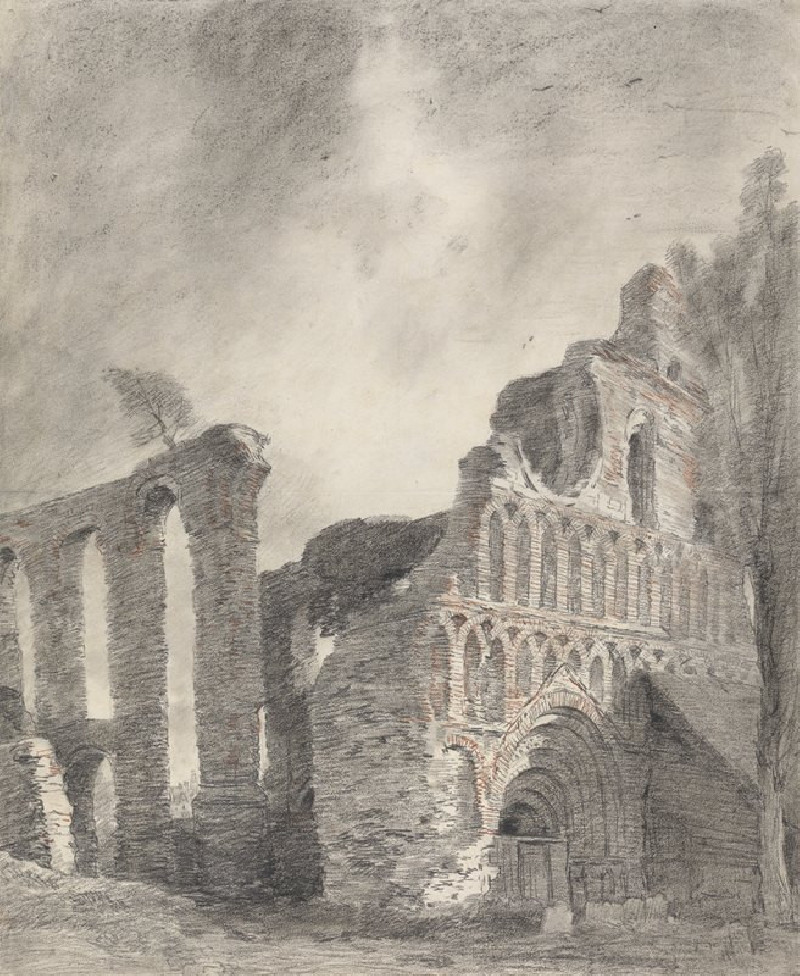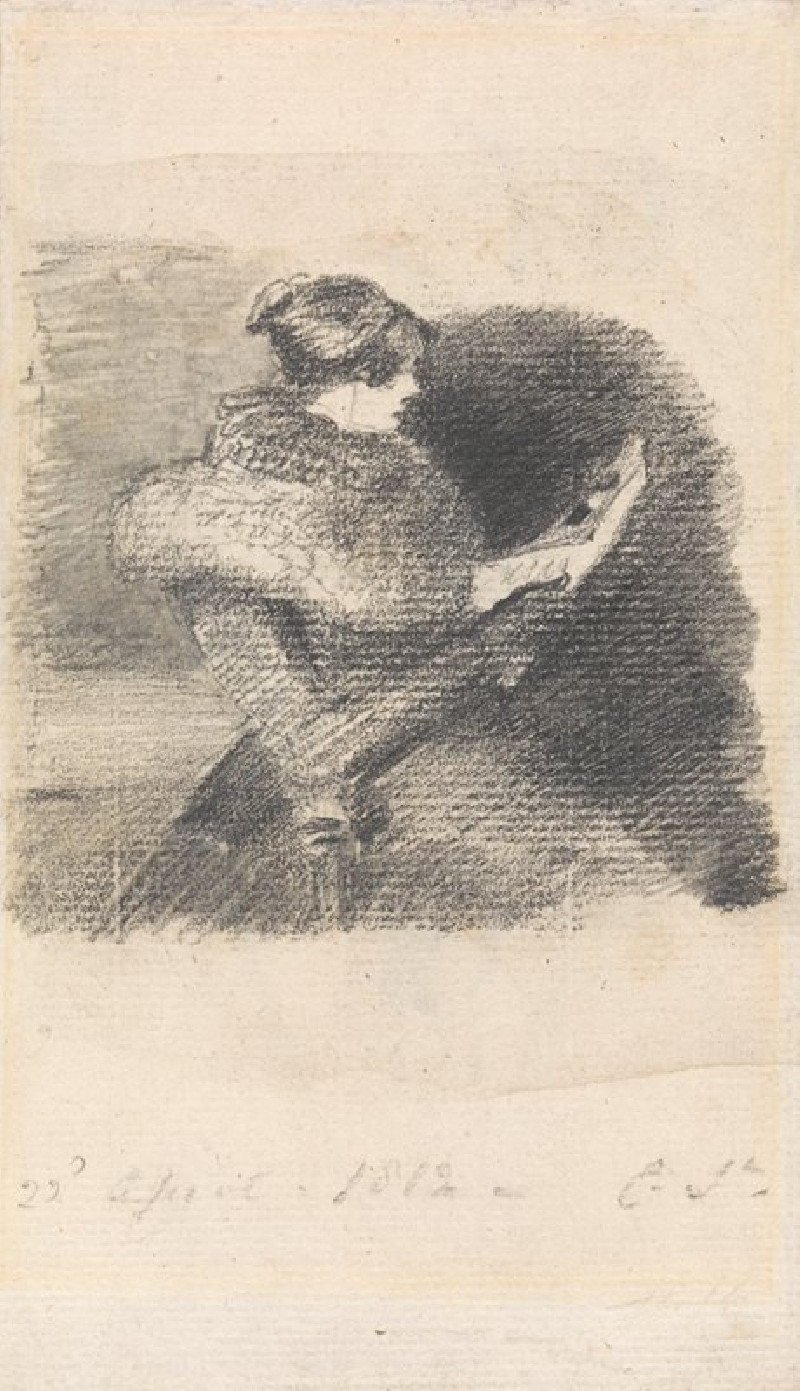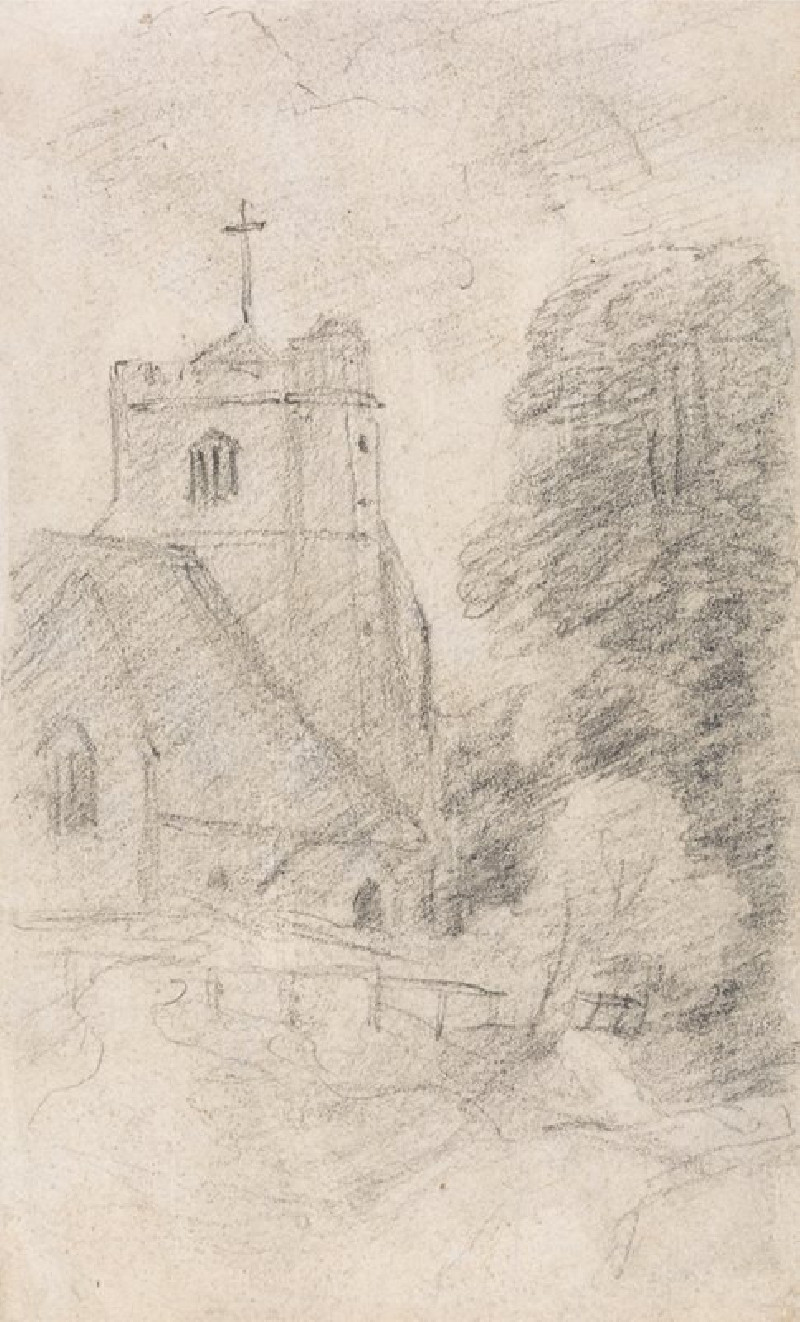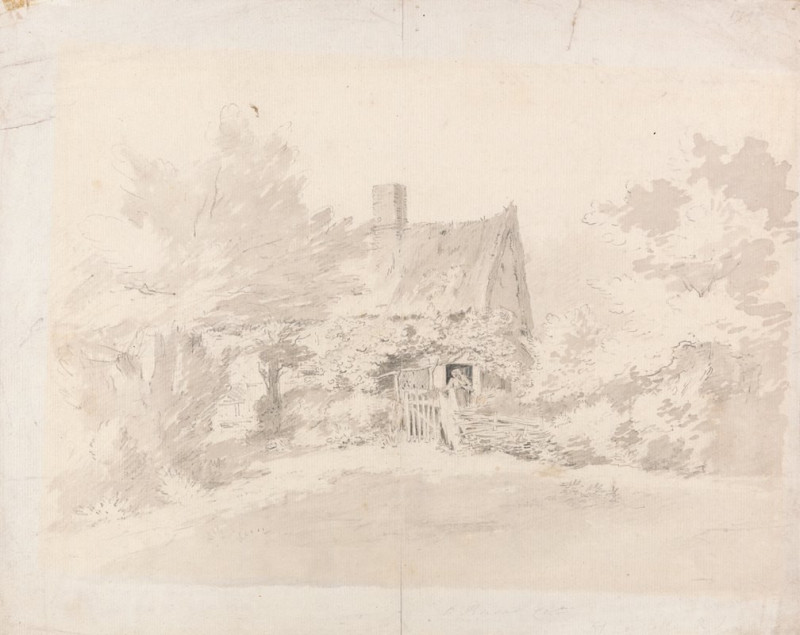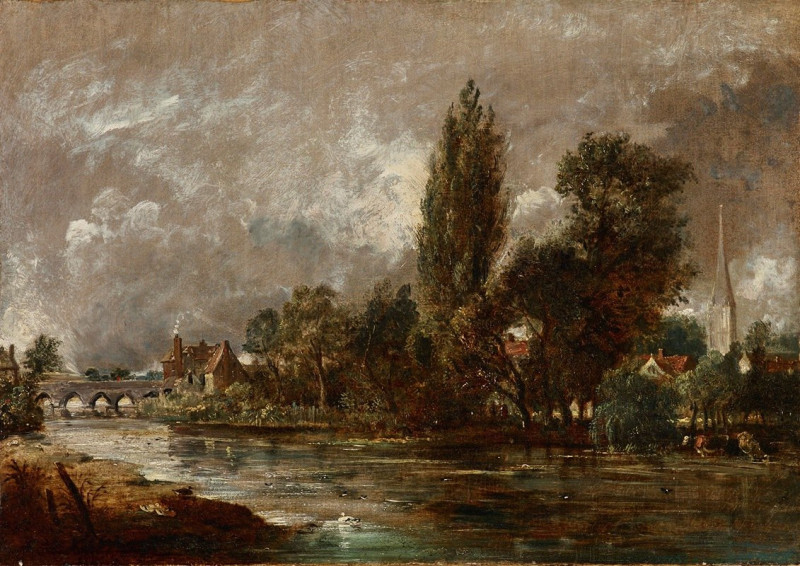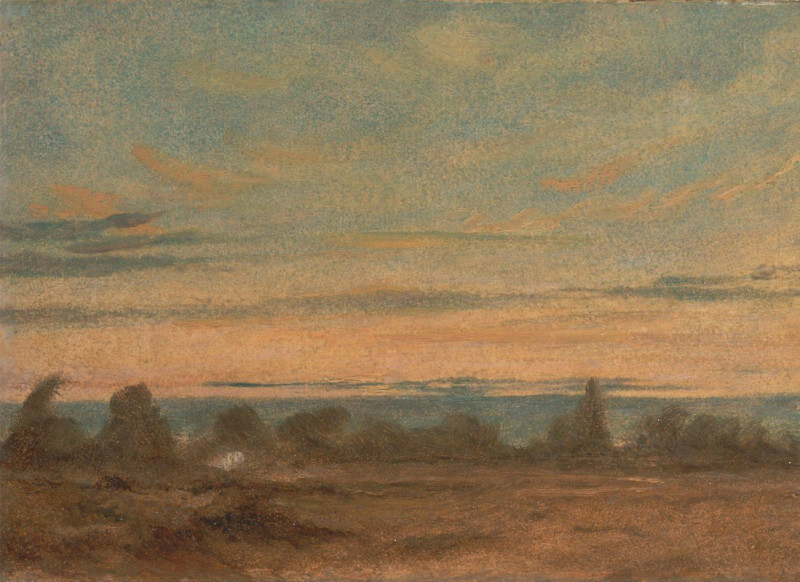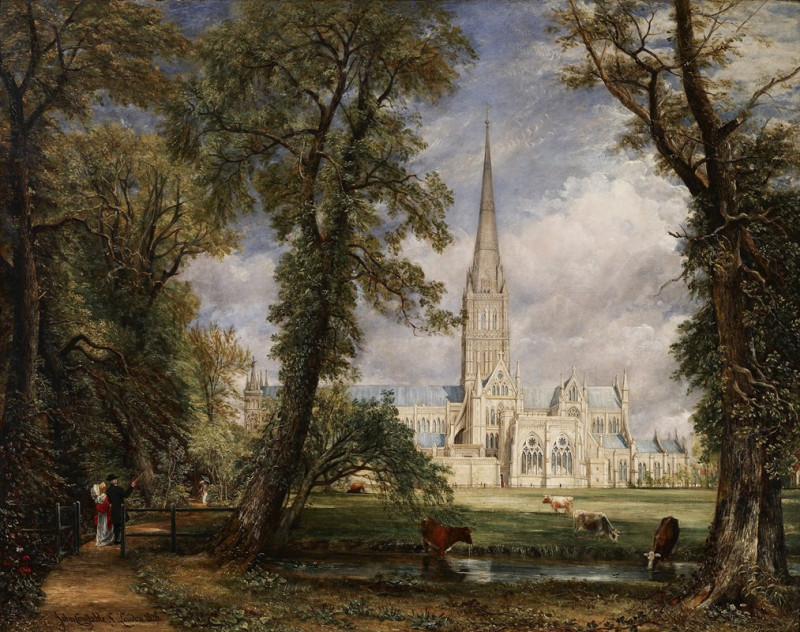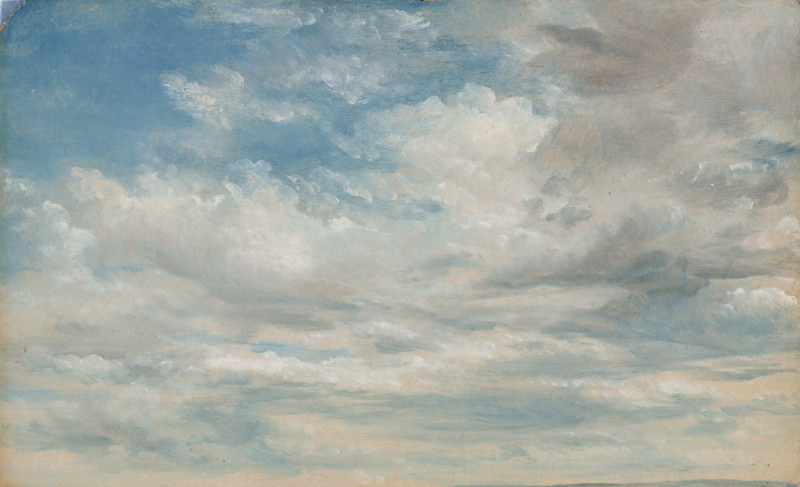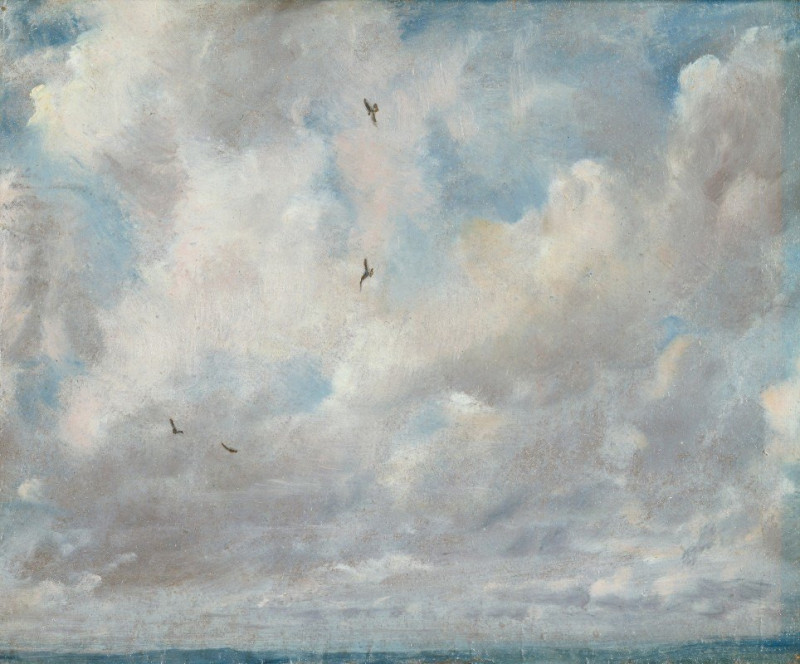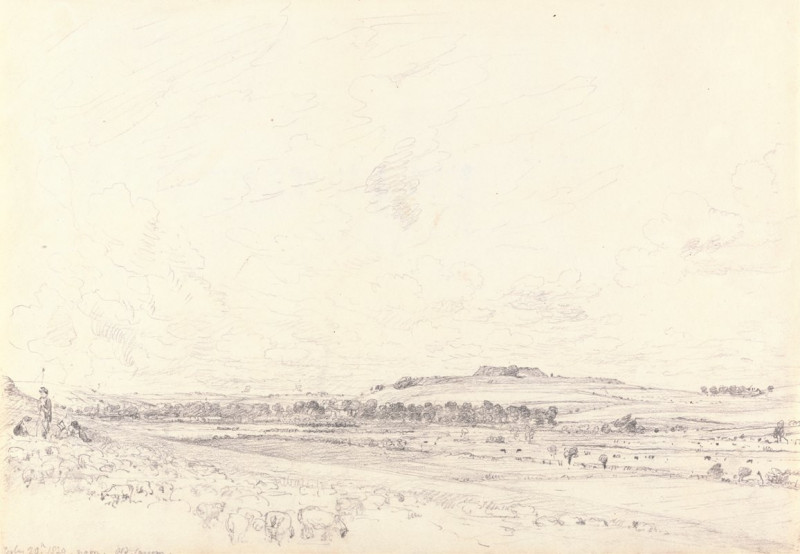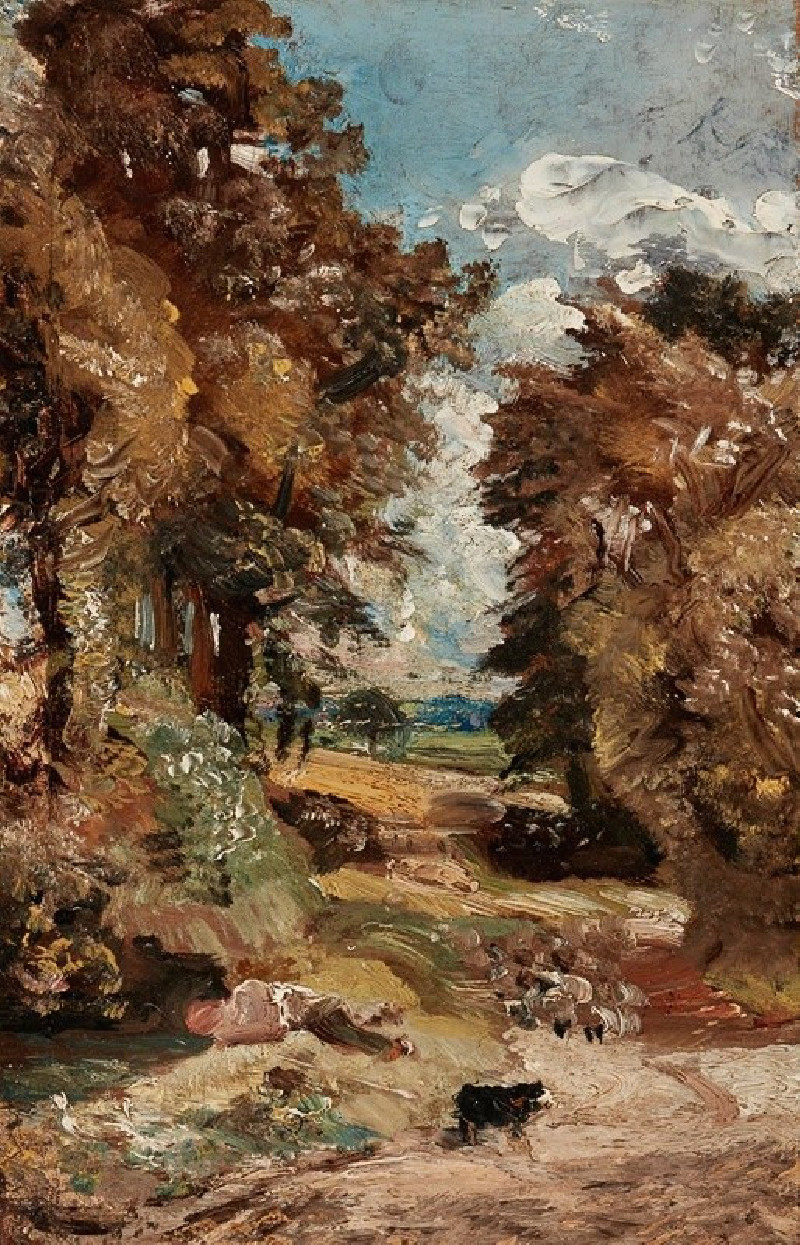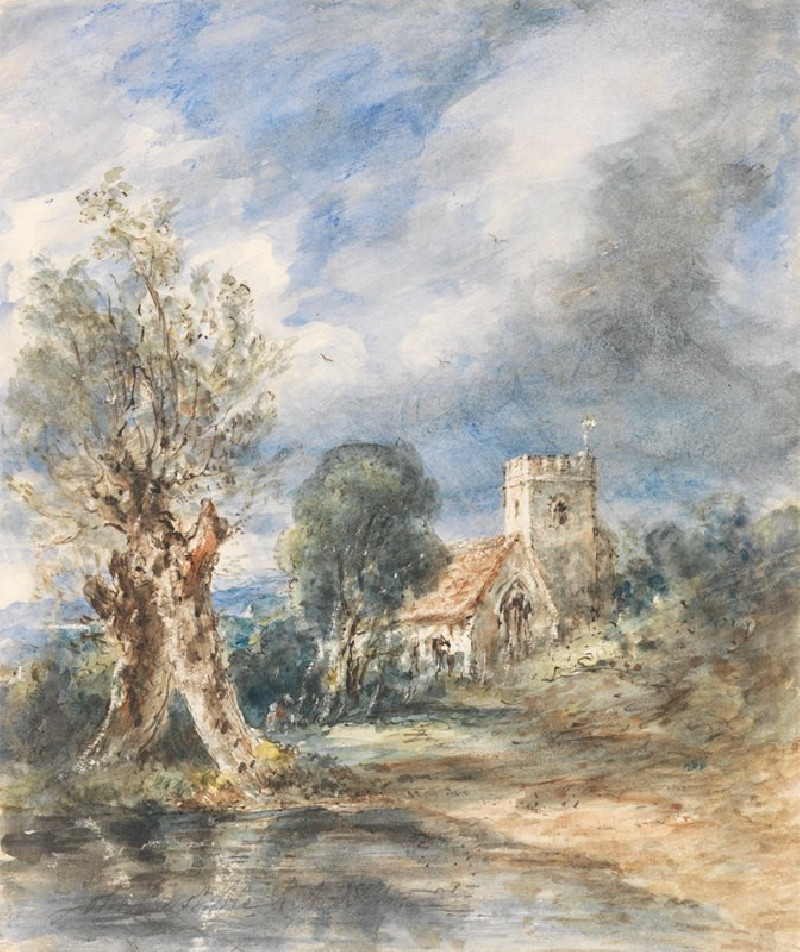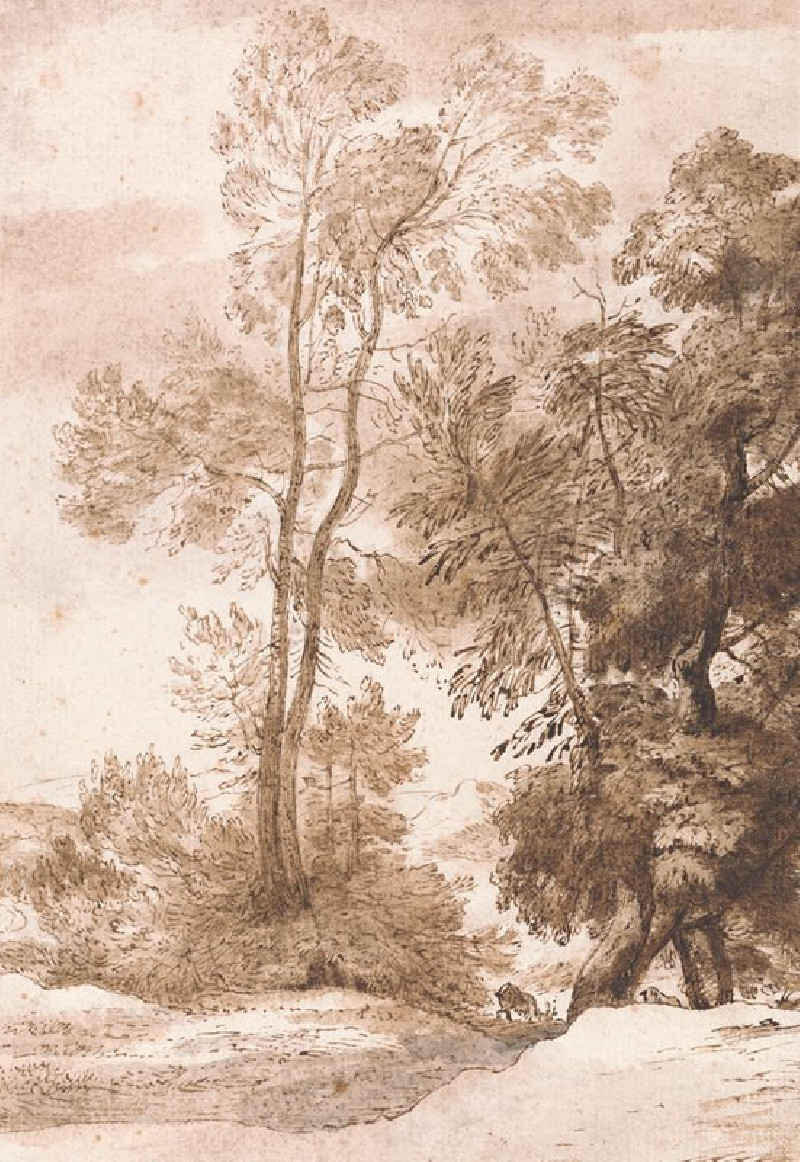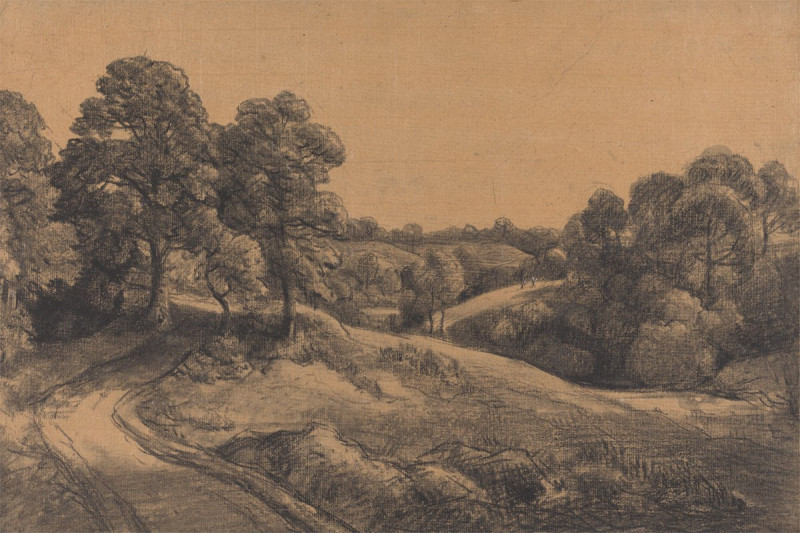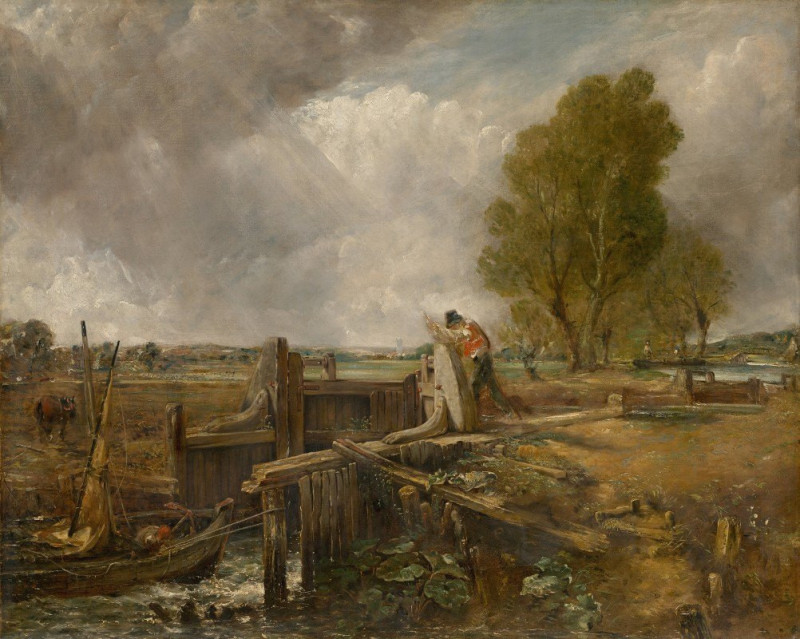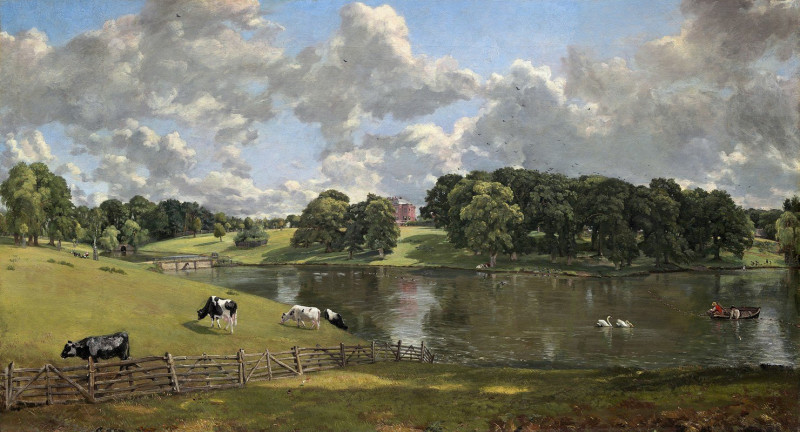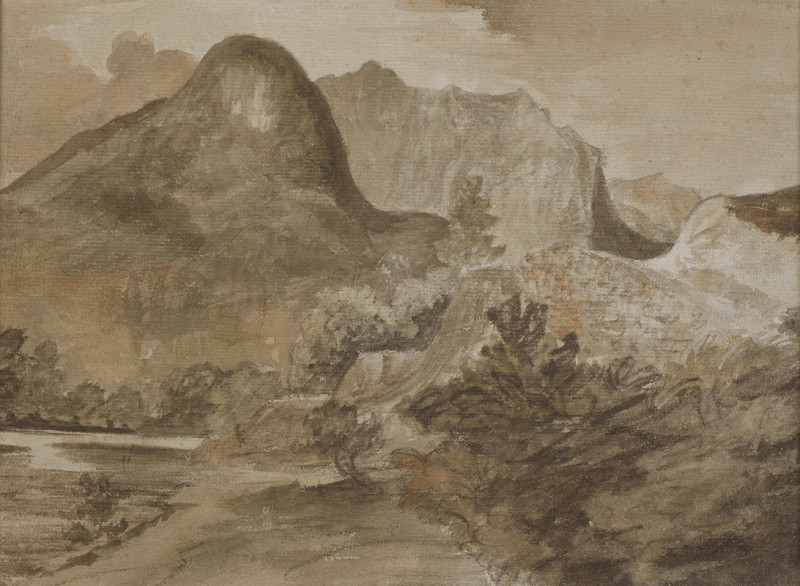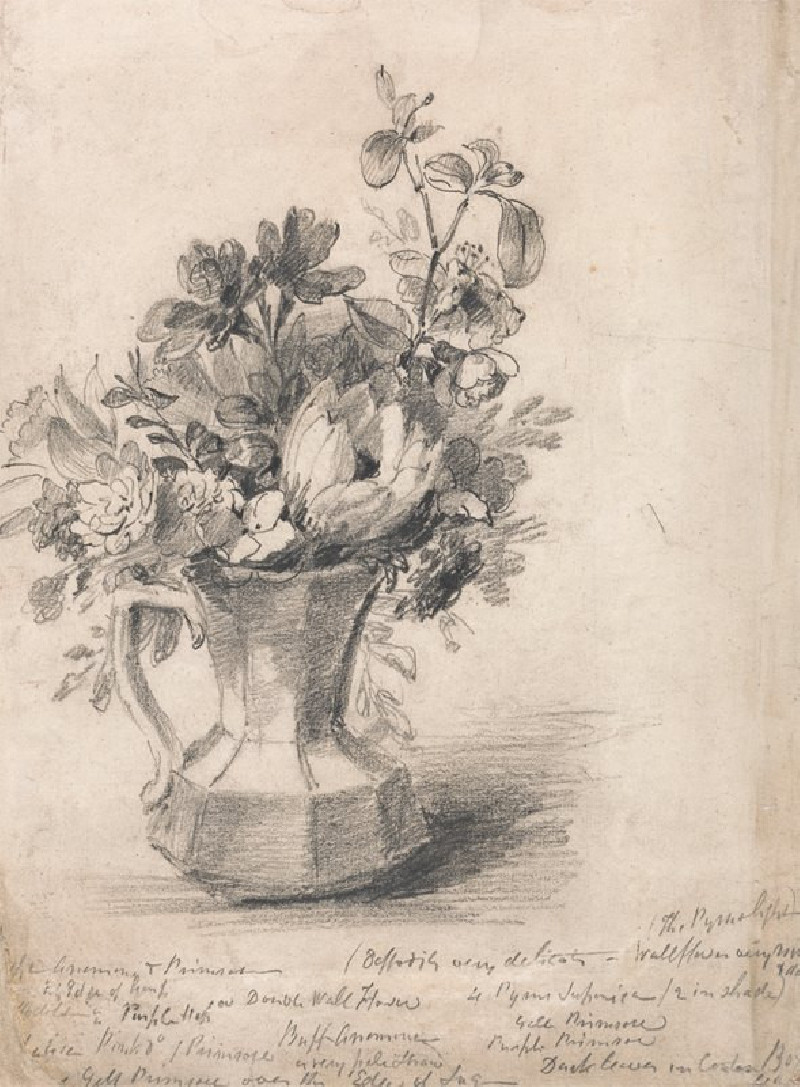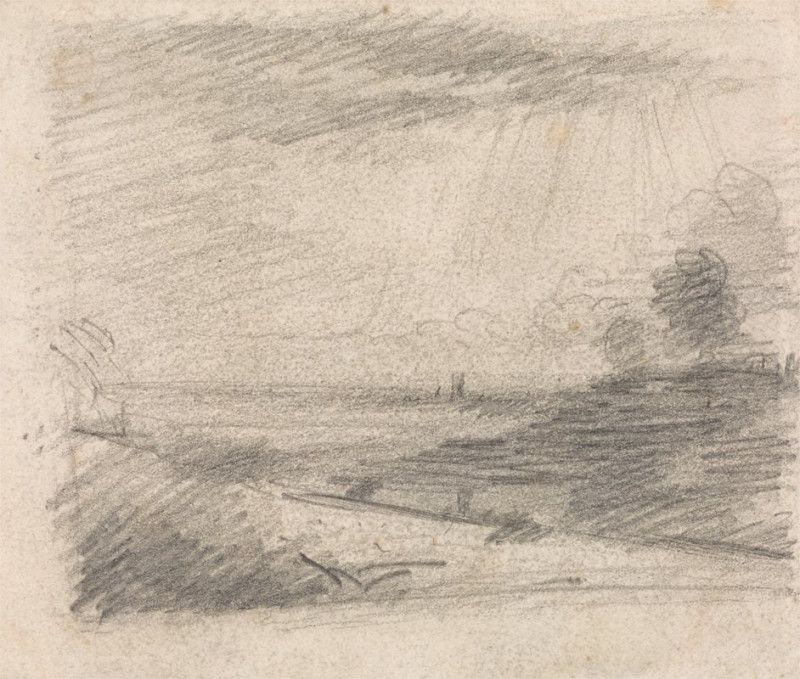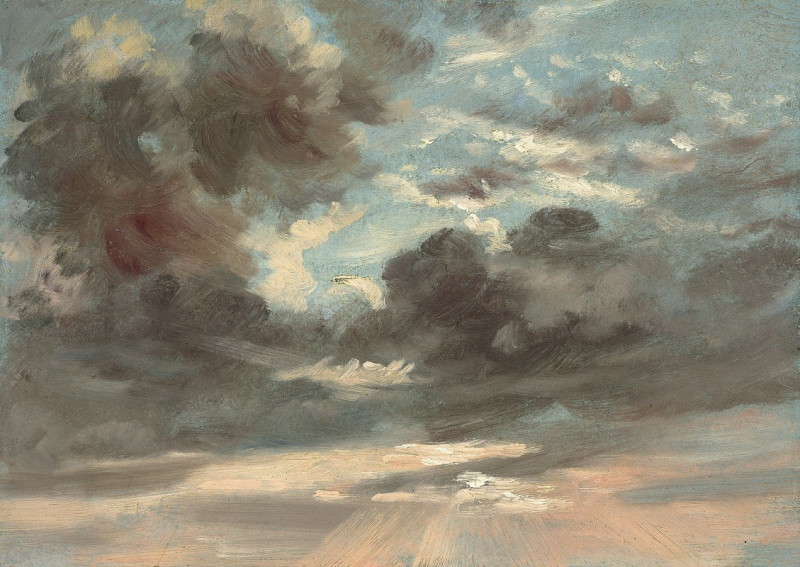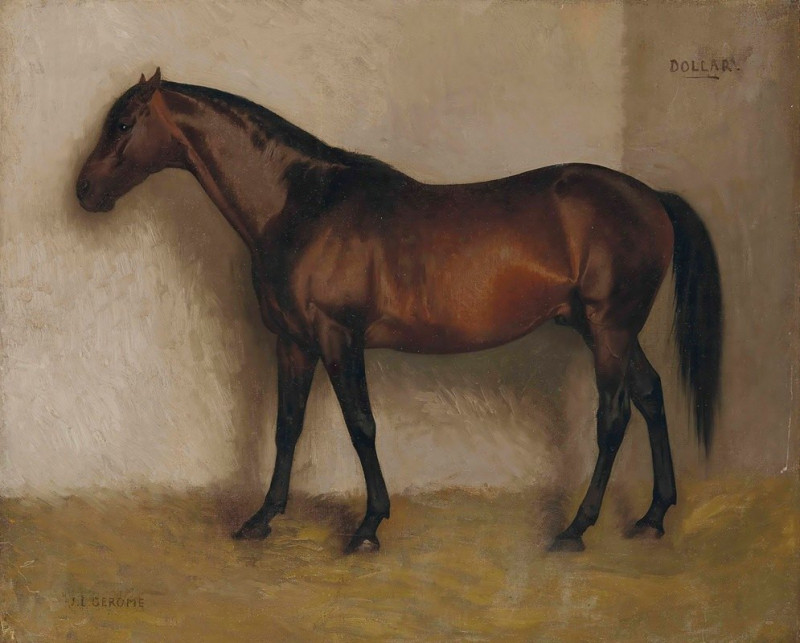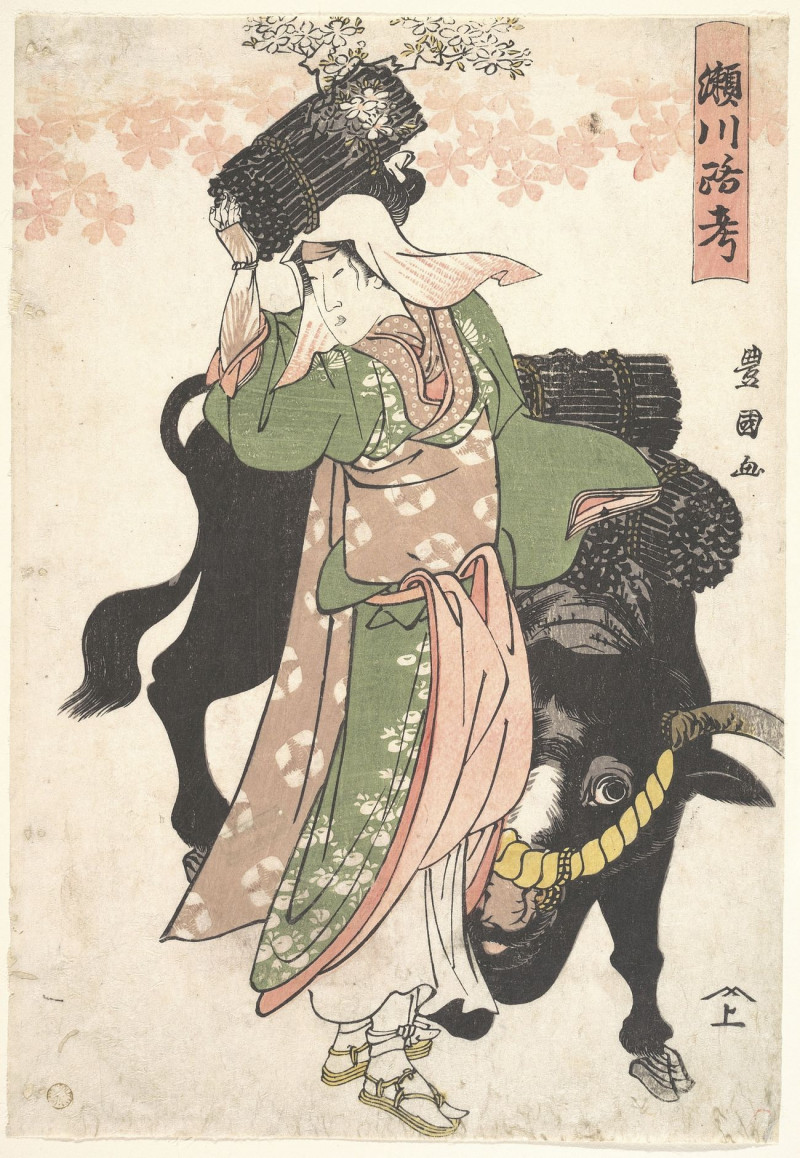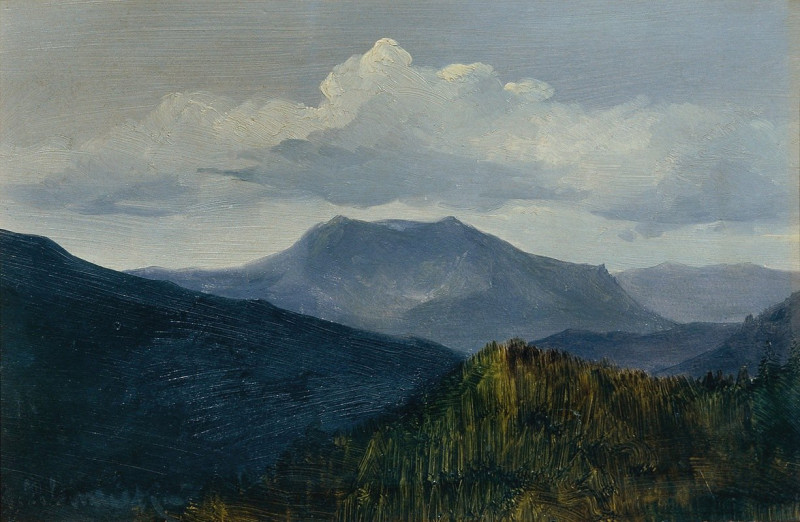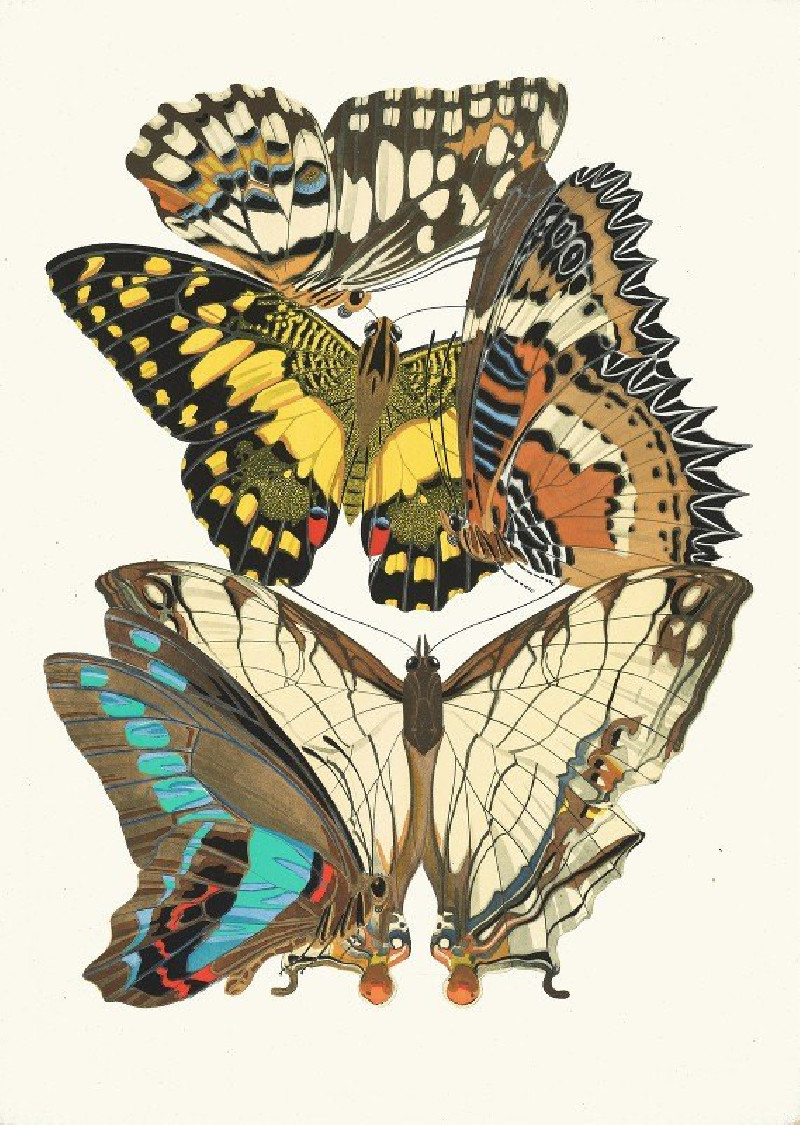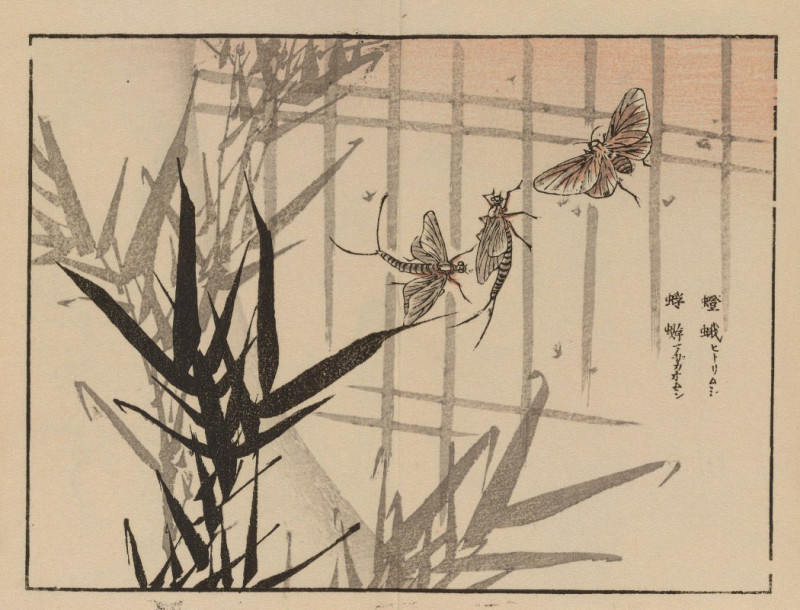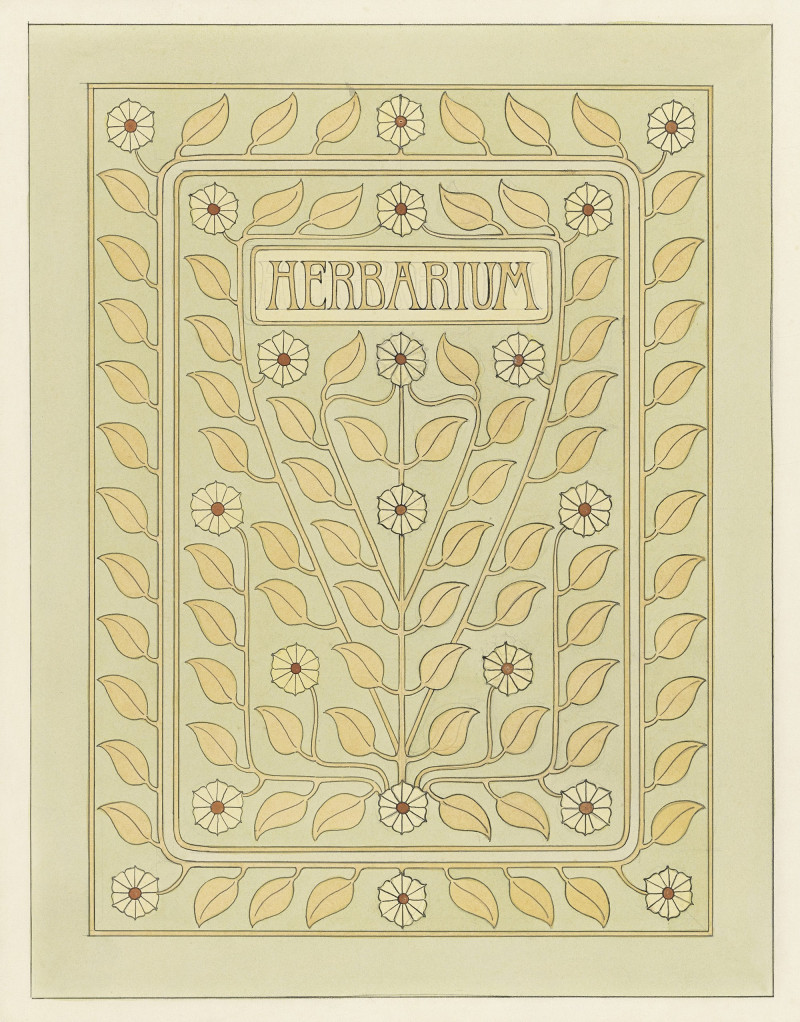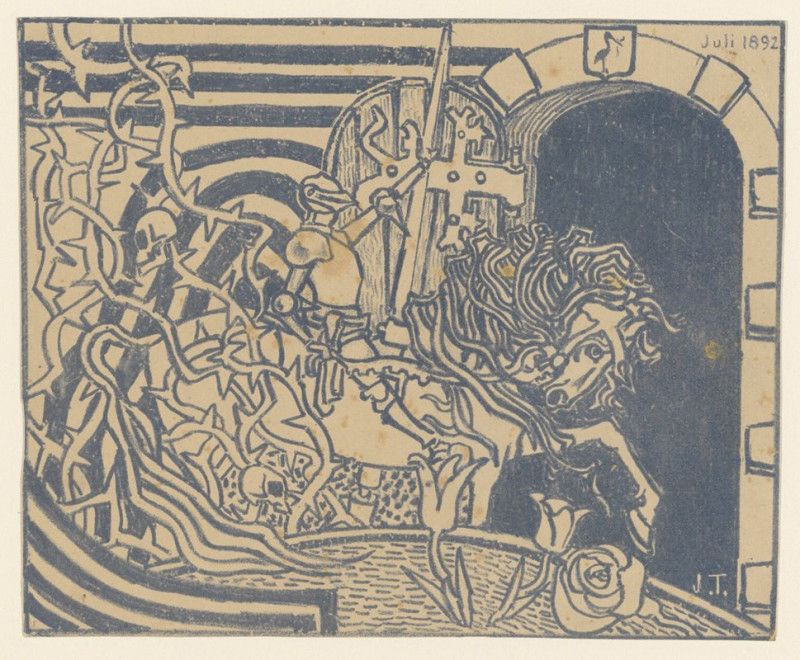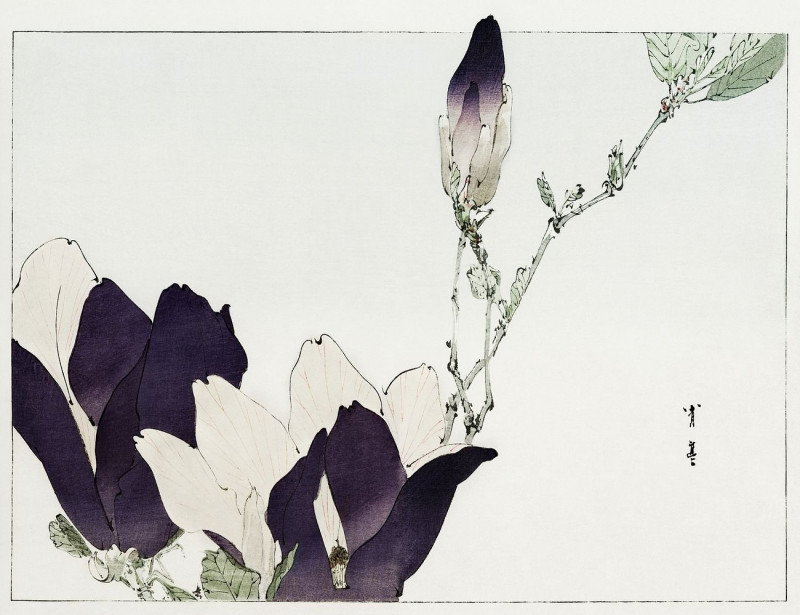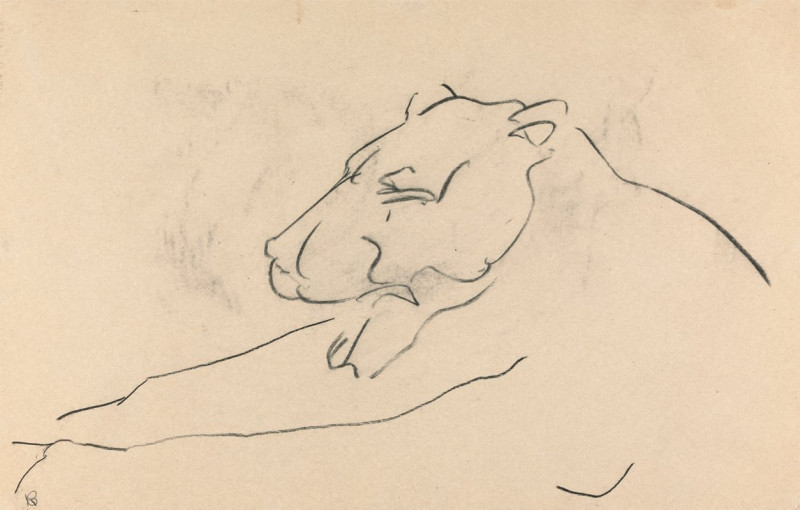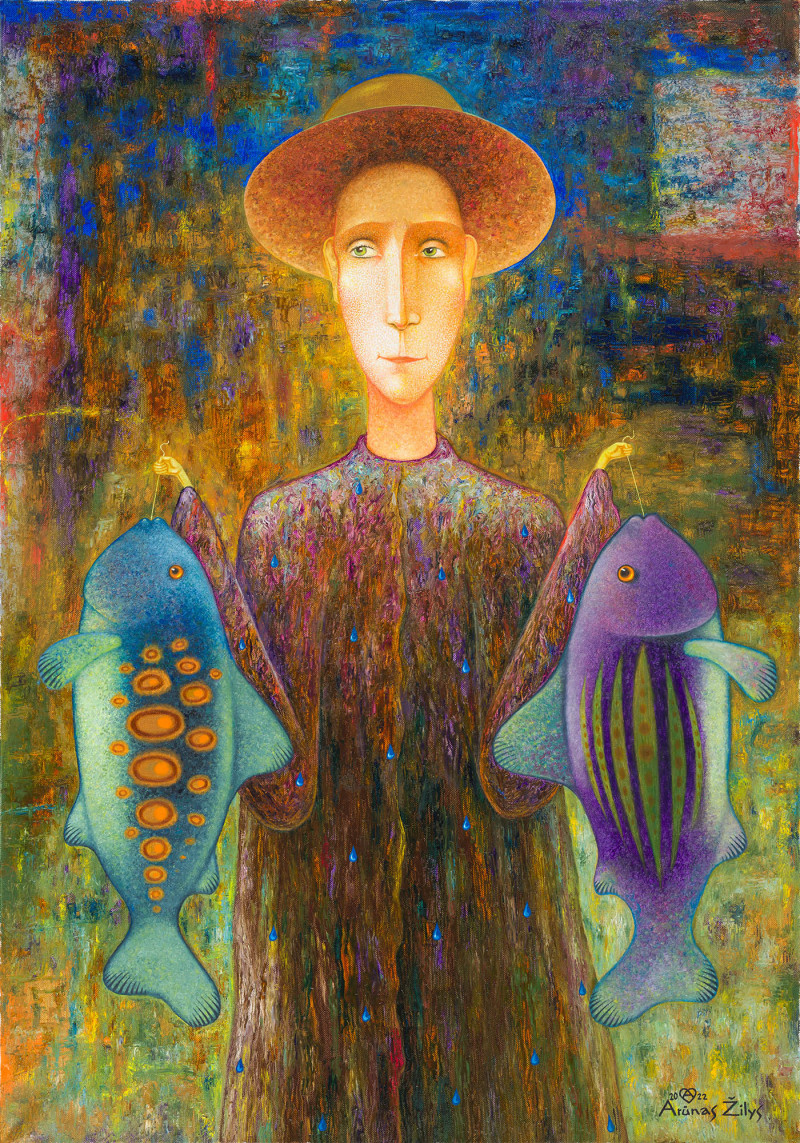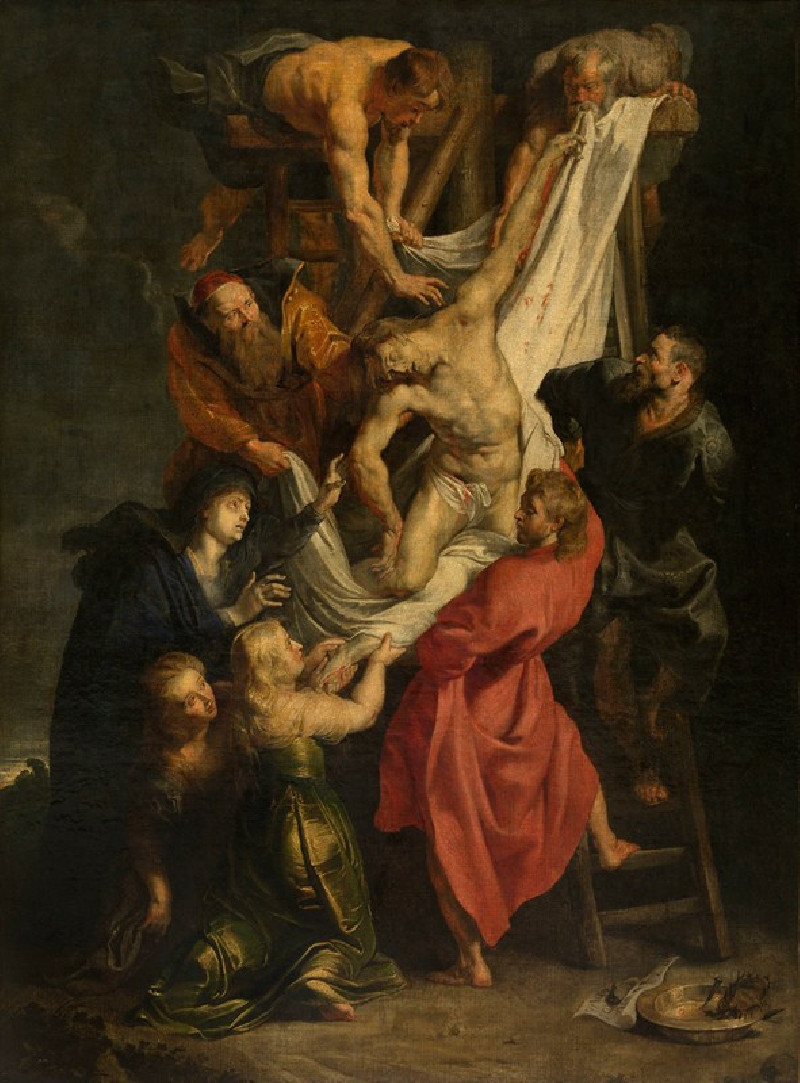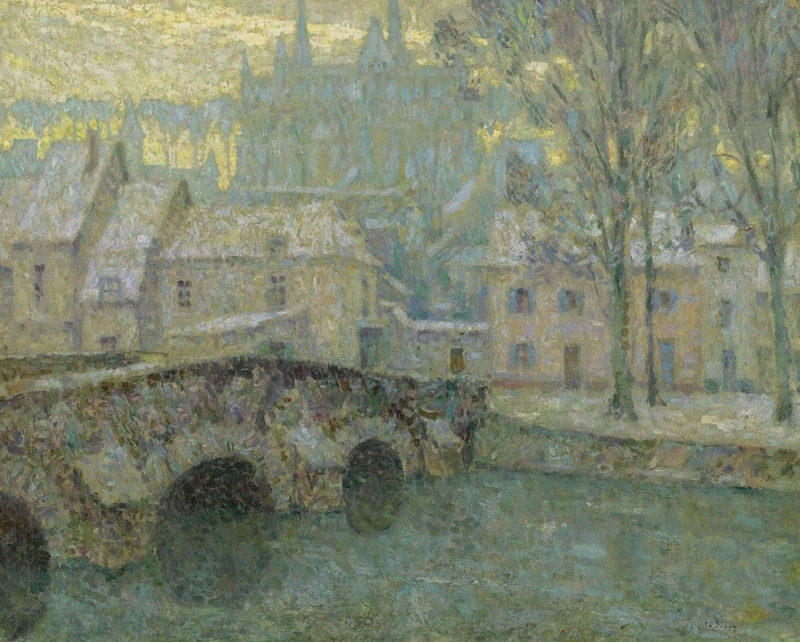Two Ships at Anchor (1803)
Technique: Giclée quality print
Recommended by our customers
More about this artwork
This exquisite sketch, titled "Two Ships at Anchor" by the renowned British artist John Constable, encapsulates the tranquility and aesthetic simplicity of maritime scenes in the early 19th century. Dated 1803, this pencil drawing offers a glimpse into Constable's early engagement with landscapes and seascapes, subjects for which he would later become famously celebrated.In this minimalistic yet evocative composition, two ships rest quietly at anchor, their detailed rigging and masts finely delineated against a broadly empty background. The absence of a detailed backdrop focuses the viewer's attention on the vessels themselves—each line and contour painstakingly rendered to convey texture and form. This focus on maritime subjects and natural scenes is typical of Constable's work, reflecting his deep appreciation for the natural world.The larger ship, occupying the center of the sketch, is markedly more detailed, inviting viewers to ponder its journeys and the stories embedded in its timbers. The smaller boat, meanwhile, suggests a sense of scale and provides a visual balance to the composition. Together, they evoke a sense of peaceful coexistence with the vast, open waters.John Constable, primarily known for his lush and vibrant landscapes, here uses a subtler palette of grays and blacks, showcasing his versatility and skill in rendering scenes that feel both immediate and timeless.This drawing is not only a testament to Constable's technical skill but also serves as an evocative reminder of the serene beauty of maritime life in the 19th century. It's an invitation to pause and reflect on the quieter aspects of life, much as one would while watching ships gently sway at anchor.
Delivery
Returns
John Constable RA was an English landscape painter in the Romantic tradition. Born in Suffolk, he is known principally for revolutionising the genre of landscape painting with his pictures of Dedham Vale, the area surrounding his home – now known as "Constable Country" – which he invested with an intensity of affection. "I should paint my own places best", he wrote to his friend John Fisher in 1821, "painting is but another word for feeling".


